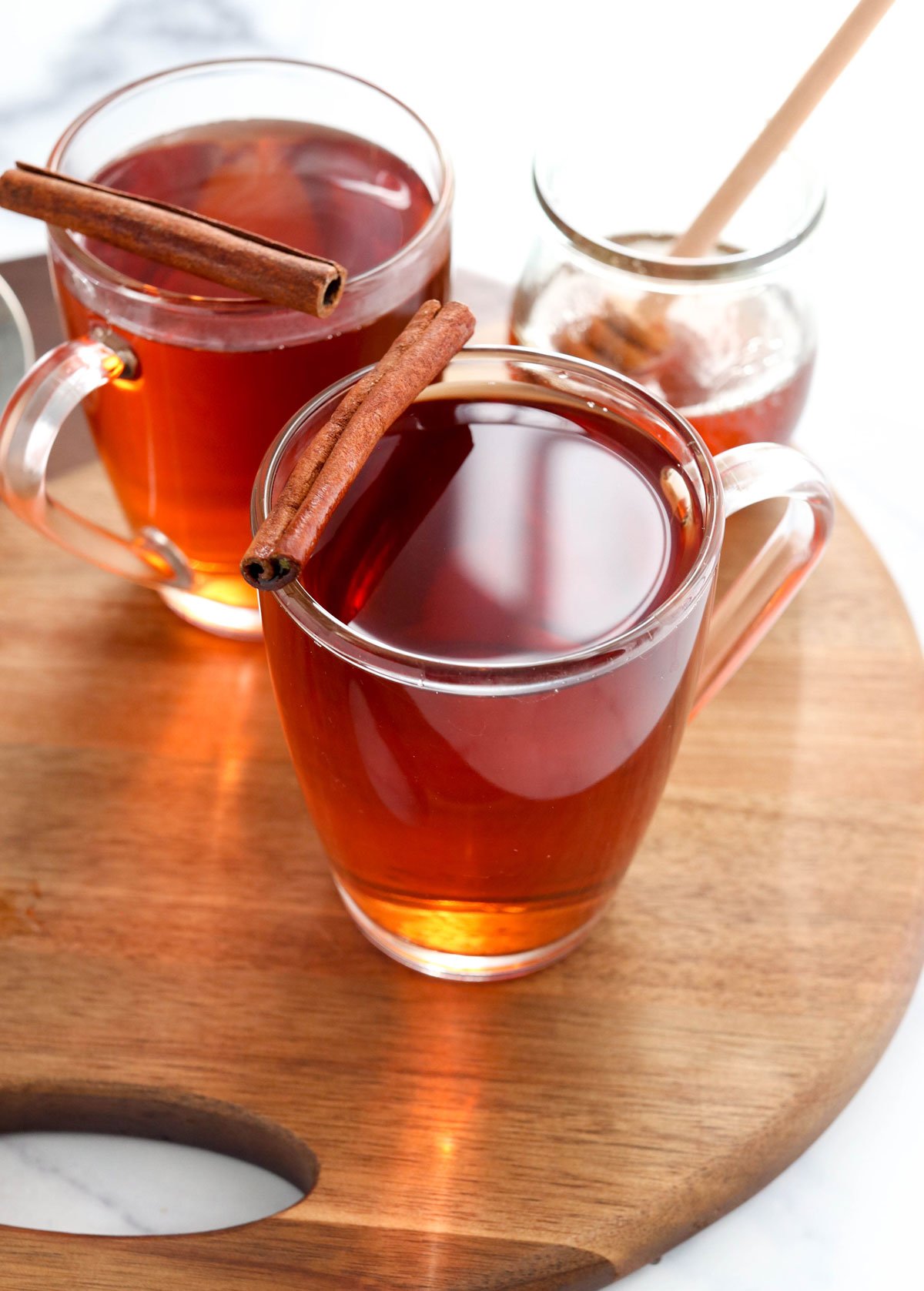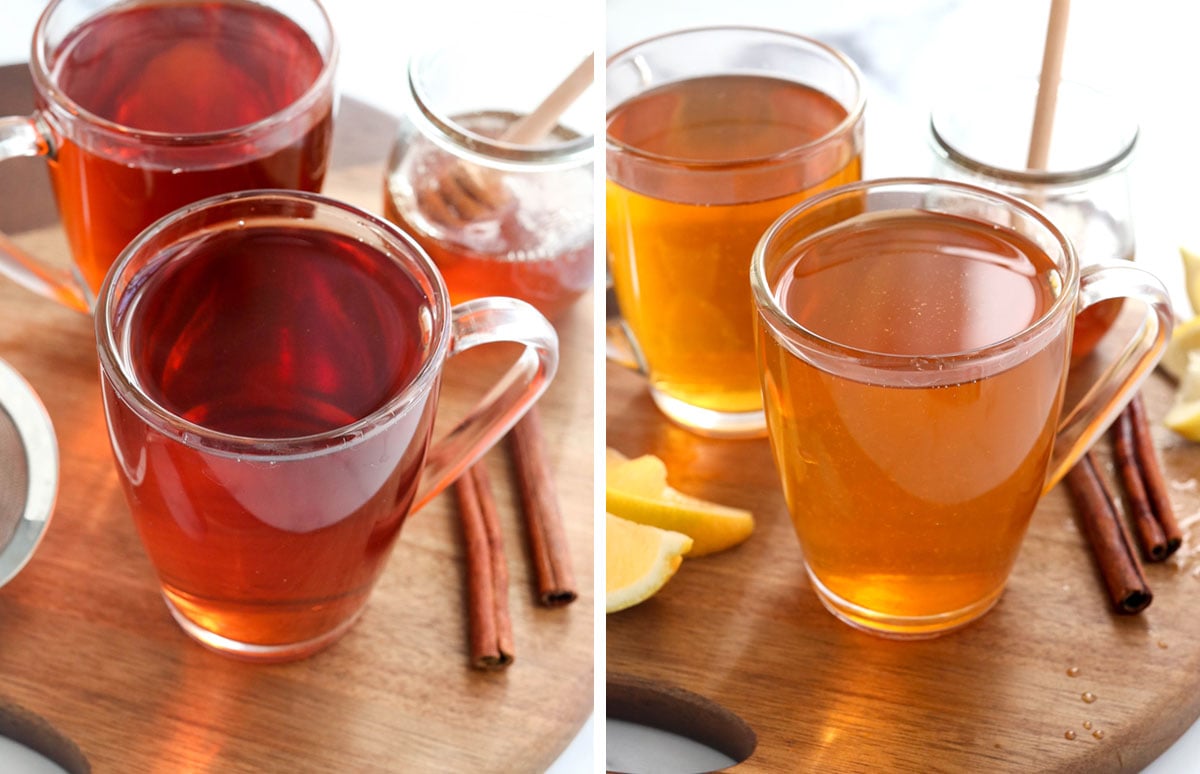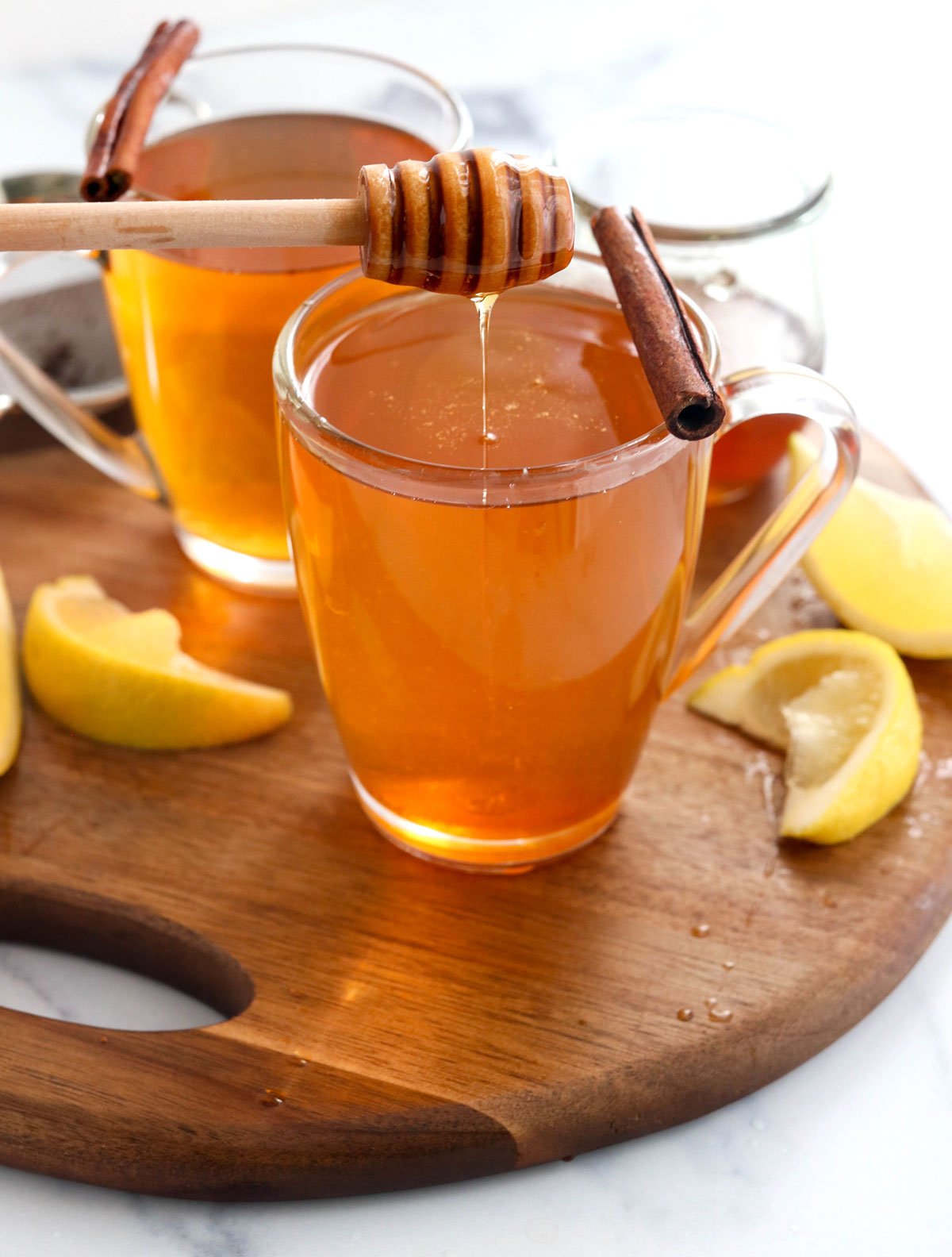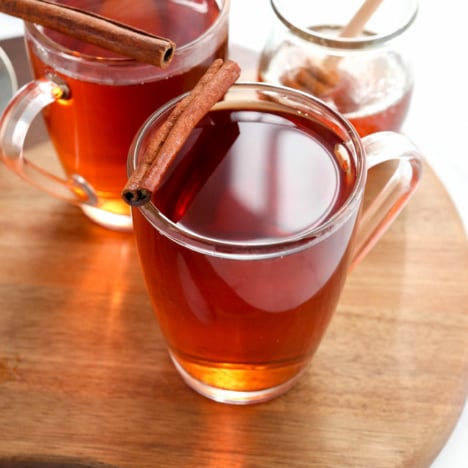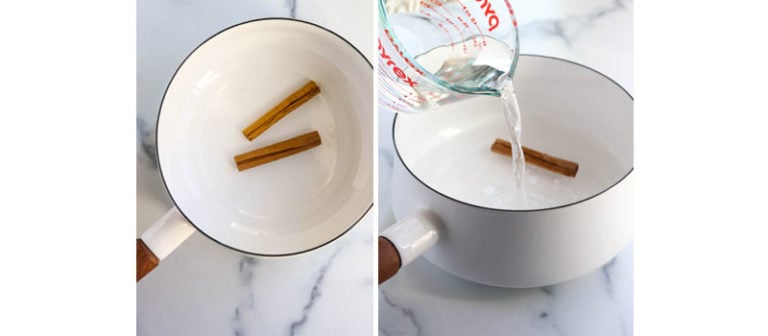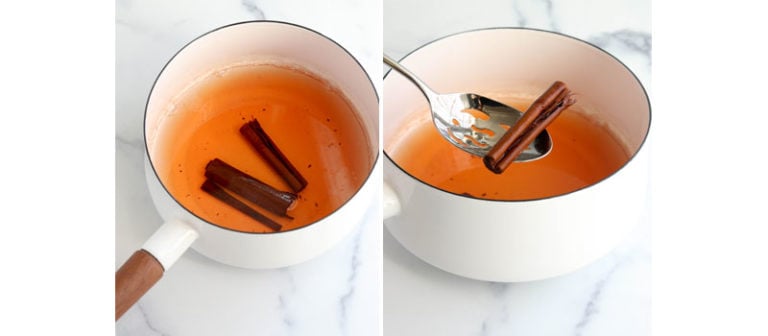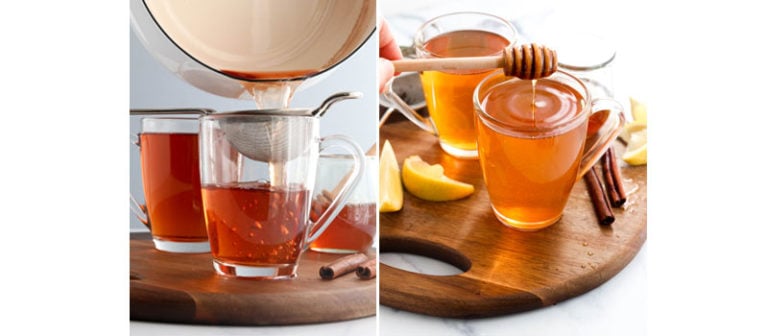Here’s why you’ll love it:
Cinnamon may lower the risk of heart disease, because it lowers “bad” LDL cholesterol levels and it may also help lower blood pressure. This spice may also dramatically reduce insulin resistance, which plays a role in Type 2 diabetes. Cinnamon has been shown to lower blood sugar levels, by inhibiting digestive enzymes to slow down the digestion of carbohydrates. Another compound in cinnamon has been shown to mimic insulin, which also could account for its blood sugar lowering ability. Cinnamon may also help to inhibit tau aggregation in the brain, which has been associated with Alzheimer’s disease. Cinnamon oil has been shown to be effective against respiratory infections caused by fungi. It’s antimicrobial effects could be effective at preventing tooth decay, too.
Another perk? Brewing this cinnamon tea in your kitchen will make your house smell amazing!
How to Make Cinnamon Tea
To make cinnamon tea, you’ll simply simmer together cinnamon sticks and water. I use 1 cinnamon stick per 1 cup of water. Just like making Ginger Tea or Elderberry Tea, you’ll simmer the two ingredients together for about 15 minutes. Then strain out the cinnamon sticks (and any small pieces that might fall off during the process) and serve warm.
Cinnamon tea tastes lightly sweet and spicy on its own, so you don’t have to add anything to it if you don’t want to. However, it’s also delicious with a squeeze of fresh lemon juice and a drizzle of honey. Fun Fact: Adding lemon juice to your tea will make it turn lighter in color. Watch it change from an amber red color, to a light yellow-orange color right before your eyes when you add the lemon juice!
Which Type of Cinnamon is Best?
There are several varieties of cinnamon available, but they tend to be grouped into two categories: Cassia and Ceylon. Here’s the difference between the two:
Ceylon Cinnamon. This is known as “true” cinnamon, though both cinnamon varieties come from the same family of trees. Ceylon cinnamon sticks have a pale brown color, with thin, multiple layers swirled inside. It tends to be a little more expensive and harder to find in grocery stores. It has a more mild, delicate flavor that people seek out, especially when cinnamon is the star flavor in your recipe. Cassia Cinnamon. This is the more common variety you’ll find at the grocery store. The sticks are darker brown, are are rolled in thicker, single sheets. (These are probably what you think of when you think of what a cinnamon stick looks like.) Cassia cinnamon is stronger in flavor, and comes in three varieties: Indonesian, Saigon, and Chinese.
Is it Safe to Drink Everyday?
Cinnamon is generally considered safe in small amounts, but like almost everything, you can overdo it. Cassia cinnamon contains a compound called coumarin, and eating too much coumarin has been linked to liver toxicity. Even just 1 teaspoon of ground cinnamon per day could be too much when it comes to cassia cinnamon (depending on your body weight, according to this study), while Ceylon cinnamon seems to only have trace amounts of coumarin. So, it sounds like a good idea to use Ceylon cinnamon sticks when making this tea, if you can get your hands on them.
If you try this Cinnamon Tea, please leave a comment below letting me know how you like it. And if you make any modifications, I’d love to hear about those, too! We can all benefit from your experience. – Reader Feedback: What’s your favorite warm beverage? My morning go-to is my London Fog or Vegan Latte.

